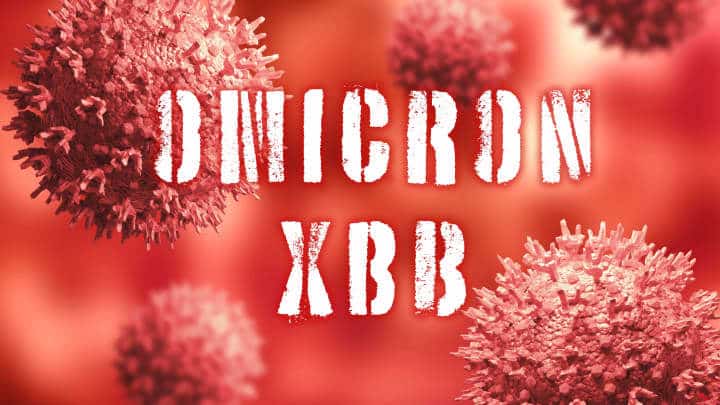Due to pandemic cancellations, Christmas would have been Lorenzo Simpson’s first opportunity to spend time with his extended family all year. However, that morning, he woke up with a sore throat and a sinking feeling. For the second time, the 30-year-old confined himself in his Hyattsville home with supplies from CVS rather than holiday helpings after testing positive for Covid.
That’s a major low for me because I enjoy eating, he remarked. Many holiday celebrations were ruined this year by the coronavirus, lingering flu, RSV, and even strep A instances; there will be more disappointment to come as new infections cause missed work and school.
A new and more contagious coronavirus type is also currently spreading rapidly in the Northeast, which, according to public health experts, makes it easier for new infections to avoid immunity from immunizations and prior illnesses. With mandatory testing and vaccines, schools—which have experienced spikes in illness after the holidays throughout the pandemic—are hoping to cut down on absenteeism.
According to modeling data from the Centers for Disease Control and Prevention, the variant XBB.1.5 quickly became the predominant strain in the Northeast in recent weeks. The variant, followed by BQ variants, accounts for over half of new infections in the area that includes D.C., Maryland, and Virginia.
When a variation is displaced, this is what occurs. According to Neil J. Sehgal, an assistant professor of health policy and management at the University of Maryland School of Public Health, “a variant is not going to be substituted by a variety that travels more slowly. Monoclonal antibodies are useless against XBB, as they were against earlier strains, but Sehgal emphasized that the bivalent booster, updated in the fall, still provides some defense against the new variation.
He stated that “at this time, all indications indicate to strong cross-protection from the bivalent booster.” Not ideal, but still fairly good and unquestionably preferable to receiving no boost at all. However, the bivalent booster’s absorption is still pitifully low. The revised booster has been given to around 37% of Americans over the age of 65, but only about 17% of those aged 18 and older, according to CDC data.
Public health specialists anticipate a rise in coronavirus infections and more hospitalizations following the holidays, as has consistently occurred over the previous three years, despite their reluctance to predict the behavior of an unpredictable virus.
Everyone appears to be aware of a sick person right now. Simpson admitted that while he was sorry not to be able to spend the holidays with his mother and extended family, which included a brother who traveled from Rochester, New York, he was forced to pay attention to his runny nose and telltale loss of taste and smell, which were symptoms of a coronavirus infection.
He continued to feel dizzy nearly a week later, but he didn’t want to miss his holiday shift at the restaurant where he works as a server. Given that Simpson has been quarantined for five days—the amount of time the CDC says a person is most contagious after receiving a positive test—his boss will permit him to resume work.
Flu, COVID, and RSV cases among school-aged children are on the down, but Gabrina Dixon, a pediatric hospitalist at Children’s National Hospital, predicts a comeback following the holiday break. “We are worried that we will see a rise in the numbers again when kids go back to school and they start mixing,” Dixon added. The importance of [preventive] care cannot be overstated.
To decrease the severity of illness, Dixon advises parents to make sure they have received their flu and coronavirus vaccinations. She said that in order to stop the transmission of germs, parents and schools should emphasize the value of hand washing and the use of hand sanitizer. She claimed that wearing high-quality masks would help shield kids from catching infections once they went back to school.
After the winter break, two school districts in New Jersey, Paterson Public Schools and Camden City School District, will both require masks. Philadelphia schools will also require masks for the first 10 days when classes begin in January due to rising illness rates.
To decrease the severity of illness, Dixon advises parents to make sure they have received their flu and coronavirus vaccinations. She said that in order to stop the transmission of germs, parents and schools should emphasize the value of hand washing and the use of hand sanitizer. She claimed that wearing high-quality masks would help shield kids from catching infections once they went back to school.
In a letter to parents before the break, the medical officer for the school system stated, “After recent holiday holidays, we have seen the highest transmission risk for respiratory infections in the 2 weeks after pupils return to school.” Staff and student coronavirus test kits were given home by Montgomery Schools, who also advised testing before starting classes again.
For kids and employees to return to class, D.C. schools will also give test kits and require them to present documentation of a negative coronavirus test. Throughout the epidemic, the school system’s “test-to-return” policy has been in place at the start of the academic year and following vacations and other breaks. Officials in D.C. have stated that the essential testing is required in order to securely reopen schools and maintain in-person instruction.
However, Dixon pointed out that there is no RSV or flu screening, and even some symptomatic kids test negative for covid, leading to this general advice: “If you’re sick, stay home from school.”
The next rise will be defined by secondary markers like work and school absences, according to Sehgal, because at-home testing and significantly less frequent data reporting have occurred. The Virginia Department of Health ceased advising broad masking long ago, but last week it started updating covid data less regularly and removing data on outbreaks and other indicators from the primary dashboard.

